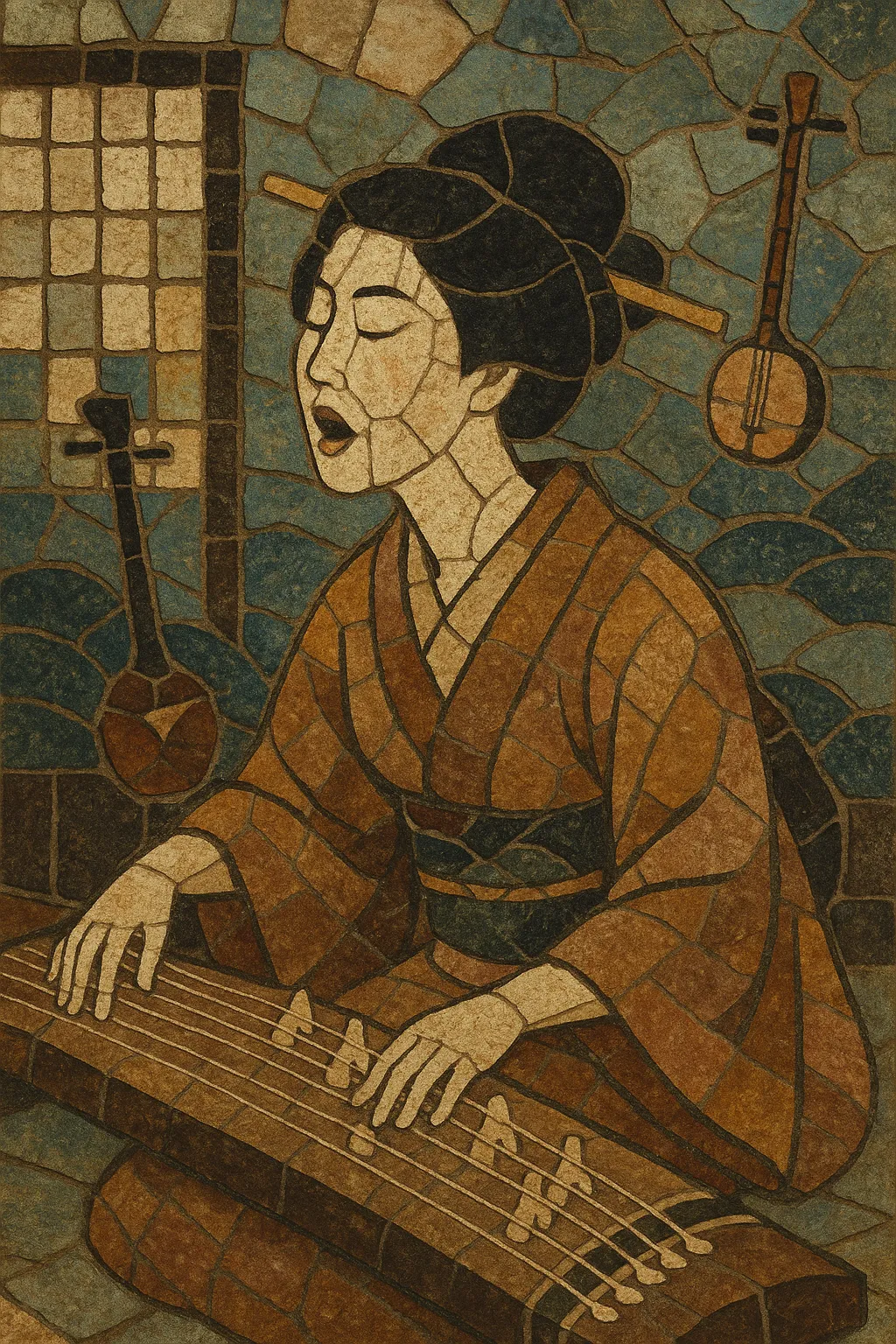Kumiuta is a classical Japanese vocal genre associated primarily with the koto and, in some cases, the shamisen. The term literally means "set of songs," and pieces are structured as suites of several short, texted sections bound by a shared poetic theme or narrative thread.
Developed in the early Edo period, kumiuta sets classical Japanese poetry (especially waka) to music. It favors refined timbres, flexible tempo, and delicate ornamentation. Melodic writing draws on traditional pentatonic modes (such as miyako-bushi and in/yo modal families), and performance emphasizes jo–ha–kyū pacing, subtle rubato, and the expressive use of space (ma) between phrases.
Kumiuta became a foundational component of the koto repertory cultivated by blind musician guilds (Tōdōza) and later systematized within the Ikuta-ryū and Yamada-ryū koto schools. Its aesthetic—intimate, literary, and highly nuanced—remains central to Japan’s hōgaku (traditional music) heritage.
Kumiuta emerged in the 17th century as part of the consolidation of a new solo song repertory for the koto. Early masters such as Yatsuhashi Kengyō (1614–1685) helped standardize tunings and repertorial types, and kumiuta took shape as a suite of short, texted songs unified by theme and mode. The music’s poetic sources—principally waka—linked it to elite literary culture while its performance practice reflected broader courtly and temple traditions.
During the late 17th–18th centuries, the Ikuta-ryū (Kyoto–Osaka area) and later Yamada-ryū (Edo/Tokyo) schools codified technique, repertoire, and pedagogy. Both preserved and expanded the kumiuta corpus, though they differed in vocal approach and koto technique. Blind professional musicians (bearing the honorific title “Kengyō”) were central to composition, transmission, and performance.
In the 19th century, kumiuta coexisted with related forms (e.g., tegotomono and danmono) and was adapted into the emerging sankyoku ensemble (koto, shamisen, shakuhachi). In the modern era, conservatories, schools, and cultural institutions maintained the repertoire. Renowned 20th-century koto artists continued to perform and record kumiuta, ensuring its survival alongside new compositions for the instrument.
Today kumiuta is taught within the Ikuta and Yamada traditions, performed in recital and educational settings, and documented in recordings. It remains a touchstone of Japanese classical (hōgaku) vocal–instrumental aesthetics, prized for its literary refinement and disciplined expressivity.


